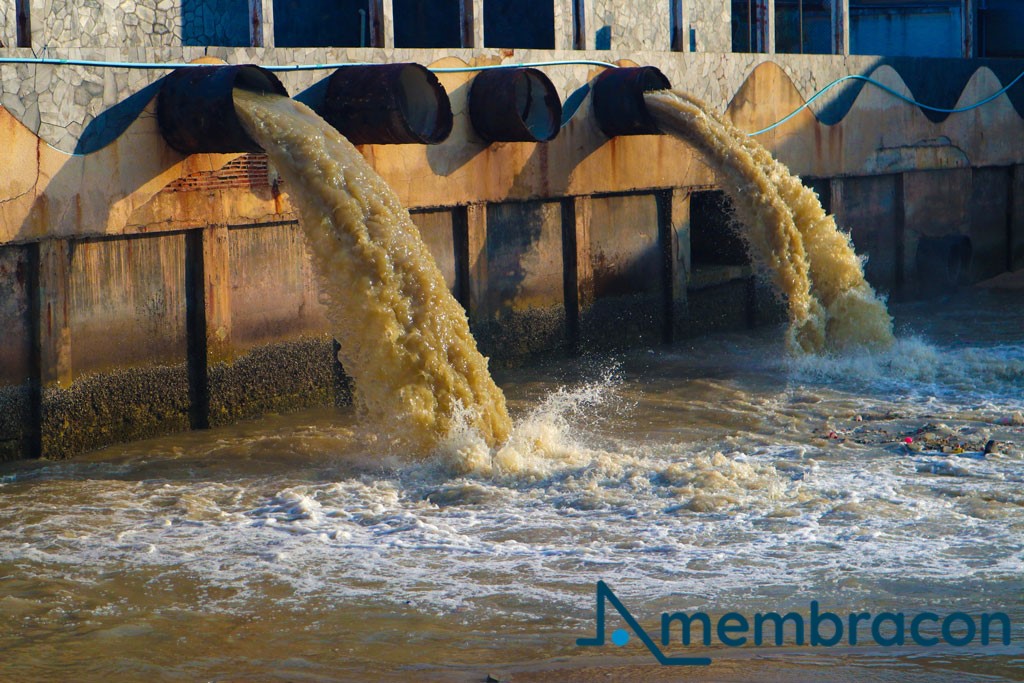Strategic Approaches to Improve Drainage Therapy Effectiveness and Decrease Ecological Influence
In the world of waste water therapy, the mission for boosted performance and reduced environmental influence is a perpetual difficulty that requires critical remedies. The combination of advanced treatment technologies, energy-efficient processes, resource recuperation techniques, enhanced nutrient removal strategies, and smart tracking and control systems represents a diverse structure for attending to these pushing problems.
Advanced Treatment Technologies
Sophisticated membrane purification systems have revolutionized sophisticated wastewater treatment processes, considerably boosting the elimination of pollutants. This technology has shown to be extremely efficient in eliminating a broad range of pollutants, consisting of pharmaceuticals, heavy steels, and natural substances, which are often testing to remove through typical therapy techniques.
Furthermore, membrane layer purification systems supply various advantages over standard treatment strategies. In addition, these systems are very functional and can be quickly integrated into existing treatment plants or utilized as standalone systems for decentralized applications.
Energy-Efficient Processes
The assimilation of energy-efficient procedures in wastewater therapy systems is essential for optimizing resource application and decreasing operational prices. One vital strategy to enhancing power effectiveness in wastewater treatment is the use of advanced oygenation systems, such as great bubble diffusers or surface aerators, which can boost oxygen transfer performance and reduce power usage.
Moreover, optimizing process control and automation with using innovative sensing units and checking systems can improve total power efficiency by readjusting operations in real-time based on actual need and conditions. Applying power audits and consistently checking power performance signs are important techniques to determine areas for improvement and track energy-saving initiatives effectively. On the whole, the adoption of energy-efficient processes in wastewater therapy not only benefits the setting but additionally adds to long-term cost savings and operational sustainability.
Resource Recovery Approaches
With an emphasis on enhancing source application and sustainability in wastewater treatment systems, the execution of resource healing methods becomes a pivotal facet in boosting functional effectiveness. Source recovery strategies in wastewater therapy entail the recognition and removal of beneficial resources from the waste stream, therefore turning what was as soon as considered waste into a useful property. By implementing resource recuperation methods such as nutrient removal and recovery, energy generation from raw material, and the production of recyclable water, wastewater treatment plants can decrease ecological impact while optimizing effectiveness.

Enhanced Nutrient Elimination Methods
Implementing sophisticated nutrient elimination techniques is necessary for optimizing the performance of wastewater therapy systems. Boosted nutrient removal plays a critical function in lessening the ecological influence of cured effluent released right into water bodies. Among the crucial methods utilized for improved nutrient elimination is the procedure of biological nutrient removal (BNR), which involves the elimination of nitrogen and phosphorus via biological processes. This can be achieved via making use of specialized microbes that can transform nitrogen substances into inert nitrogen gas via denitrification, and accumulate phosphorus within their cells via a process called improved organic phosphorus removal (EBPR)

In enhancement to BNR, progressed treatment techniques such as membrane bioreactors (MBRs) and constructed marshes can additionally be used to enhance nutrient elimination performance. By integrating these innovative nutrient elimination strategies right into wastewater therapy systems, industries and districts can successfully decrease nutrient pollution and secure the atmosphere.
Smart Tracking and Control Systems
Utilizing cutting-edge innovation, the combination of wise monitoring and control systems changes the operational performance of wastewater therapy centers. These systems integrate innovative sensing units and data analytics to constantly keep track of crucial criteria such as pH degrees, turbidity, dissolved oxygen, and circulation prices in real-time. By accumulating and site here analyzing this information, operators can gain valuable understandings right into the efficiency of the therapy processes, enabling positive adjustments to enhance therapy performance.
Smart surveillance and control systems also sustain remote monitoring abilities, permitting operators to accessibility real-time data and control features from off-site locations. This remote accessibility enhances operational versatility and responsiveness, allowing swift treatments in instance of system malfunctions or variations in influent high quality. Moreover, the predictive maintenance abilities of these systems aid stop tools failings and reduce downtime, inevitably improving the total integrity of wastewater treatment procedures (Waste Water Treatment).
Final Thought
To conclude, strategic techniques such as sophisticated therapy innovations, energy-efficient procedures, source recuperation methods, boosted nutrient removal methods, and smart surveillance and control systems play an important role in boosting wastewater treatment performance and reducing ecological influence. By executing these techniques, wastewater treatment plants can enhance their general performance, lower power intake, recover beneficial resources, and make certain compliance with environmental regulations. These strategies are vital for efficient and lasting wastewater administration techniques.

In final thought, calculated strategies such as innovative treatment modern technologies, energy-efficient procedures, source recuperation methods, enhanced nutrient removal strategies, and smart monitoring and control systems play an essential function in improving wastewater therapy efficiency and minimizing ecological effect.